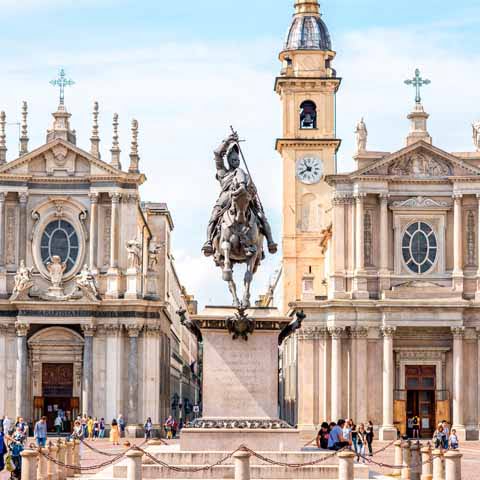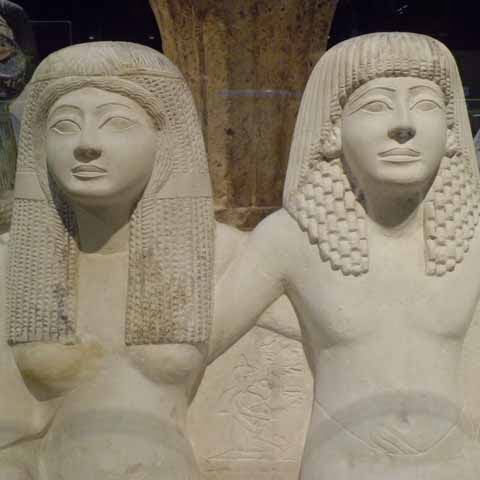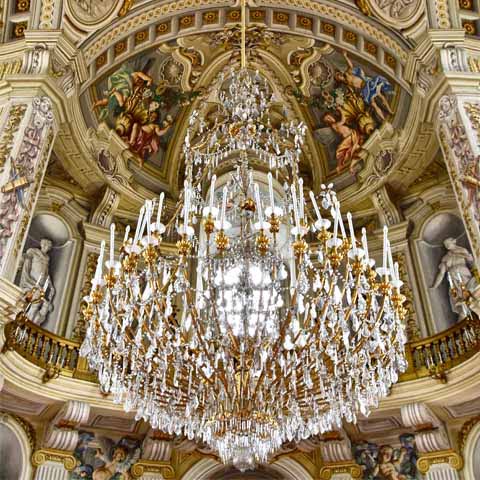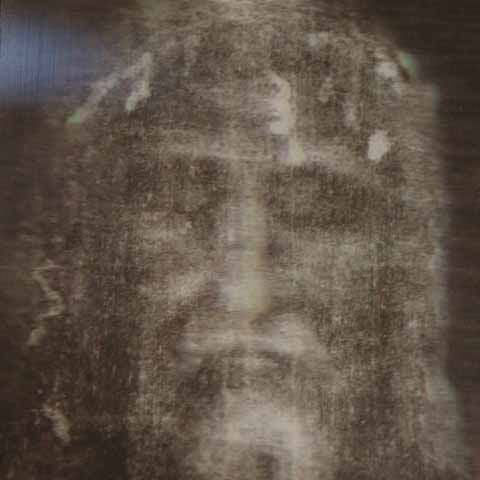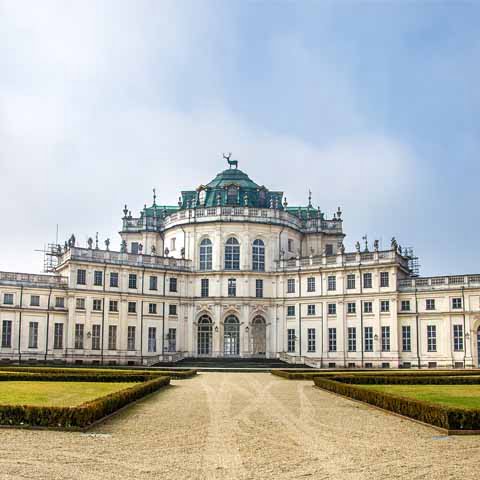The capital of the Piedmont region, Turin is a city known for its refined architecture and exquisite cuisine. Located at the foot of the Alps, it is an attractive Italy destination regardless of the season.
This marvelous city showcases its wonderful history year-round, but it can also impress those who love winter sports.
Its sumptuous baroque buildings and ancient coffee shops flank the boulevards and grandiose squares, including the famous Piazza Castello and Piazza San Carlo.
The enormous Mole Antonelliana is undoubtedly the symbol of this city. It houses more than the Museum of Cinema. Here, numerous cultural exhibitions and art events are held throughout the year. Not to mention the fact that the Mole Antonelliana’s tower lights up the night sky.
Besides splendid architecture, good food, and the surrounding natural beauty, Turin impresses with its rich history that spans thousands of years.
PREHISTORY OF TURIN
Turin rests on a plain at the foot of the Alps that it is believed to have been inhabited since the earliest times. The first to settle in the region were mountaineers, who were initially based in the Alpine peaks and then decided to descend, attracted by the fertility of the plains.
In fact, the words from which Turin derives, Taurinus and Taurino, are believed to refer to the Taurini Alpine people. Furthermore, the symbol of Turin, the bull, is also believed to be linked to the mountaineers, as this animal is known for its emblematic strength, tenacity, and combativeness.
Historians seem to agree that these people had a Celtic origin, coming from the ancient lineage of the Ligurians. They settled in the south by the Po River, then pushed themselves up north on the other bank, blending with other Celtic populations already settled in the region.
The cohabitation between the two ethnic groups gave rise to numerous villages in the valley of the river, including Taurasia, the future Turin, located at the confluence of the Dora River with the Po River.
Peace in the region was interrupted during the Second Punic War, when the Carthaginian general and politician Hannibal commanded his armies across the Alps, destroying and plundering the villages in the subalpine region, in his impetuous advance towards the conquest of Rome.
Roughly a century later, the ancient Taurasia became the seat of a Roman colony founded by Octavian after the battle of Actium and was renamed as Augusta Taurinorum.
During the Roman period, Turin became one of the most important centers in the region, especially for its importance as a communication route between the Romans and Gaul.
HISTORY OF TURIN
After the fall of the Roman Empire and the vicissitudes of the barbarian invasions, Turin fell under the power of the Lombard invaders in 570, and from this moment on, it was transformed into a duchy.
The first Duke of Turin was Agilulf, proclaimed in 589, who later became the King of the Lombards and of Italy in 591. Before his nomination as king, the Agilulf offered the ducal power to Arioald, who was succeeded by Rothari.
These successions confirm the political and military importance Turin had since the earliest centuries AD.
With the advent of the Carolingian domination, the city became capital of a vast county that extended on the alpine slopes up to Ivrea. The latter, which became a Marquisate in 888, incorporated Turin from 892 until the middle of the tenth century.
Berengar, the Marquis of Ivrea, and then Berengar II, gave new importance to the county of Turin, making it the most important center in the region by 1014.
With the fall of Berengar, Turin proclaimed its autonomy and enacted its own municipal regulations. However, the German Empire, together with the Savoy family, did not like all this independence.
The Savoy considered themselves the heirs of the rights of Berengar and started to claim ownership of the territories.
Despite the citizens of Turin trying to oppose these powers, Amadeus III the Crusader took possession of the city in 1130. Luckily though, with the support of Lothair II, Turin managed to reject the Savoy and had its municipal statutes confirmed and recognized by the powers.
Two decades later, Frederick I Barbarossa took possession of Turin with the intention of strengthening his empire and assigned the power to a bishop who became master of Turin and the surrounding territories.
With the death of Barbarossa, struggles for the succession to the head of the empire began, mainly between the House of Savoy and Marquis Thomas I. These struggles accentuated the attempts of conquest of the city, followed by alternate events, including the division of the domains of Savoy between Amadeus IV and his brother, Thomas II.
However, Savoy rule concluded with the ascension of Charles I of Anjou to the seat of Turin. Charles was succeeded by Thomas III who claimed definitive power over the city at the end of the thirteenth century.
As a result, Turin became the possession of the Savoy once again. With the reunification of all former Savoy territories in the following two centuries, Turin became the administrative capital of the subalpine domains of the duchy, as well as the capital of the political and diplomatic affairs in the region.
Turin also became the seat of the Supreme Council of Justice in 1459, then the capital of the State of Savoy.
During the Franco-Hapsburg conflict, the city was occupied by the French, who reigned here until 1562. After the Treaty of Cateau-Cambrésis though, Turin passed under Duke Emmanuel Philibert of Savoy.
The French occupation lasted for about twenty-five years, during which the city lost most of its treasures. The first targeted were the fortifications, the Church of San Cristoforo degli Umiliati, and the Roman amphitheater, landmarks that were razed to the ground.
The new French governor also ordered the removal of all Savoy signs, such as the coat of arms and the institutions of the city, replacing them with new ones based on the French model.
With the arrival of Emmanuel Philibert and the establishment of the Savoy State once again, the city received new monuments, palaces, buildings, and a new fortified system that embellished the citadel and discouraged potential invaders.
Despite this restoration and subsequent expansion, Turin suffered two terrible sieges, first in 1640 by the French, and then by the son of Charles Emmanuel II supported by Spain. Thanks to royal help, the French took possession of the city once again, assigning the power to a regent.
A few decades later, in 1706, Duke Victor Amadeus II of Savoy regained control of the city and forced the French to flee.
Seven years later, the Duchy of Savoy obtained a new victory over the French as a result of the Treaty of Utrecht, which granted it all the Italian domains near the Alps and the Kingdom of Sicily. In 1718, the Savoy exchanged the Kingdom of Sicily with that of Sardinia. Thus, Turin became the capital of the Kingdom of Sardinia.
Following the outbreak of the French revolution, the city suffered once again during the invasion of the French troops, who were forced to flee by the Austro-Russian army under the command of a Russian general.
However, in 1800, Napoleon Bonaparte obtained a victory at Marengo, reached Turin, and established a temporary commission of government. It also annexed Piedmont – and consequently Turin – to France.
At the end of the Napoleonic period, the Congress of Vienna granted power to the Savoy once again, and from then on, Turin became an increasingly important city as a center of common interest in the view of the Unification of Italy.
During the Risorgimento, Count Camillo Benso di Cavour and the future first king of Italy, Victor Emmanuel II, both originally from Turin, became the protagonists of the movement.
As a skilled diplomat, Cavour managed to forge an alliance with Napoleon III, the Emperor of France, for a joint intervention against the Austrians in Northern Italy. In 1859, the Vienna government sent an ultimatum that ordered Turin to disarm, but the city responded with a declaration of war.
The future king, enjoying the support of the French army, left immediately for the front and entered victoriously in Milan, freeing it from Austrian oppression.
This traced the path towards the Unification of Italy, which, bolstered by Garibaldi’s Expedition of the Thousand from 1860 to 1861, resulted in a Unified Kingdom of Italy on March 17, 1861.
Turin was the capital of the new kingdom from 1861 to 1865, when the seat was transferred to Florence, and later to Rome.
As a consequence, the subalpine city saw its political importance diminishing, an event that marked the beginning of a period of deep crisis and a temporary decrease in population.
In an attempt to avoid the decadence that could have derived from the loss of Turin’s political influence and function as the capital of Italy, the city, that already owned small distilleries, weaving mills, spinning mills and foundries, began to develop and transform itself into an important industrial center.
This marked the beginning of FIAT, which means the Factory of Italian Automobiles Turin, and the city quickly earned the title of the automobile capital of Italy.
With the advent of World War I, Turin entered into a dramatic period characterized by frequent strikes, demonstrations and street clashes. At the same time, the Spanish Flu pandemic also took its toll on the city.
Despite Italy’s victory, the end of the war did not mean the beginning of a wealthy period for Turin. Many fighters returning from the front found it hard to reintegrate into everyday life, giving rise to subversive situations.
The Fascists took power in 1922, starting an activity of militia that was also supported by the climate of confusion and intolerance that predominated in the city. In the same year, Benito Mussolini stopped in Turin for a few days.
Due to its status as an industrial hub, Turin was the first Italian city to suffer aerial bombardment on June 12, 1940. The anguish would last until the end of the war, between bombing and riots, actions of the partisans and executions. Undoubtedly, the darkest years of Turin were those spent under the German occupation.
In the post-war years, Turin entered into a period of reconstruction and booming industry. Between the fifties and the seventies, the city doubled its population and expanded its automotive industry.
However, the end of the twentieth century marked the beginning of a crisis that mainly affected FIAT, the pillar of Turin’s economy. These events had serious repercussions on employment, affecting economic development.
In 2006, the city hosted the Winter Olympics, which led to a revitalization of Turin and a new push to expand the city’s tourism sector. Turin’s investment in its museums and cultural sites paid off as today the city is one of Northern Italy’s highly regarded travel destinations.
ARCHAEOLOGY OF TURIN
Turin is one of the richest cities in Italy when it comes to archaeology. From countless outdoor sites scattered throughout the city and important museums, including the Egyptian Museum, archaeology lovers have plenty of choices.
Most open-air sites date from the Roman period, such as the necropolis and the remains of a Roman villa present in Piazza San Carlo.
An underground Domus retains much of its original charm, including unaltered mosaics, while in the Gallery of Carlo Emanuele, there is the only ancient plaque with the name of the Roman city, Augusta Taurinorum.
The Archaeological Area of Rivellino degli Invalidi is another noteworthy site to visit, preserving both prehistoric and medieval remains.
The Antiquities Museum in Turin is one of the oldest museums in Europe that exhibits a collection of artifacts from prehistory to the early barbaric age.
The Archaeological Museum of Turin was established in the sixteenth century by the House of Savoy. This museum holds multiple collections displaying local and international artifacts. It originally housed the Egyptian collections too, until they were transferred to a dedicated museum.
Other protohistoric and prehistoric artifacts exhibited here include Etruscan, Cypriot, Phoenician, Greek, and Assyrian elements.
The Cities of Piedmont, Italy
Don't just see Italy, live it.
Your dream trip to Italy has never been closer
No more endlessly scrolling travel sites. Our travel experts will craft the perfect, one-of-a-kind trip just for you.

300+
DESTINATIONS
We offer more Italian destinations than any travel site. Do and see more with Trips 2 Italy.
1 (of a kind)
ITINERARIES
Because your dream trip to Italy should be designed for you, not for the masses.
100%
PEACE OF MIND
From flights and accommodations, to food and activities - we take care of every detail.
